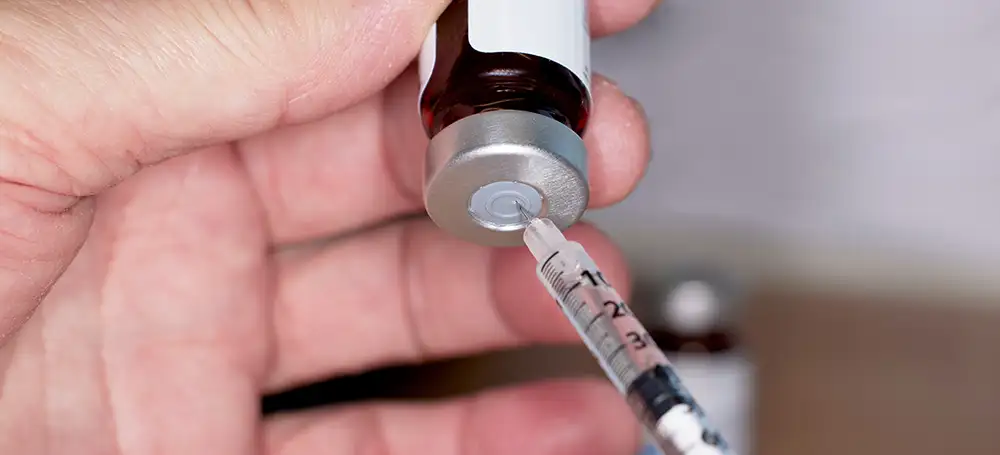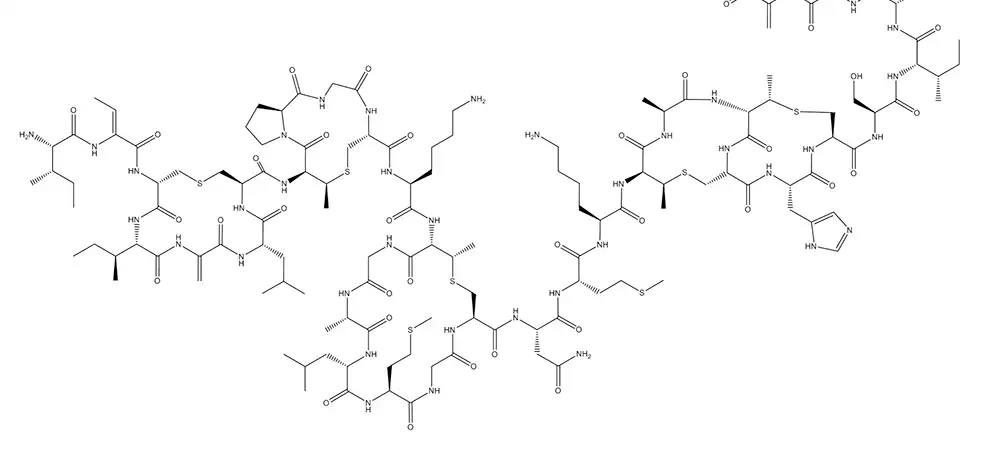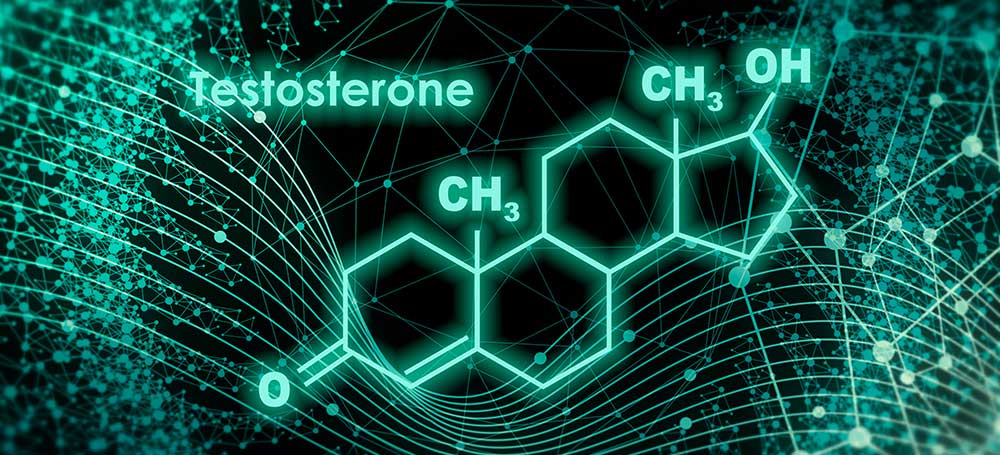If you’ve started to experience weight gain, depression, or sexual dysfunction, you may shrug it off as a result of stress at work or home. Possibly you think these are just normal developments that come with getting older. Or maybe you’re dealing with increased irritation and even a reappearance of your teenage acne. It’s easy to ignore these symptoms — But in doing so, you may be ignoring a physical cause within your body. You may have unhealthy levels of testosterone.
What Is Testosterone?
Testosterone, the male sex hormone, is responsible for building muscles, boosting libido, and burning fat in male bodies. The hormone fuels puberty, turning boys into men through building their muscles, deepening their voices, growing facial hair, and developing sexual function.
Testosterone, which is produced in the male testicles, doesn’t just come into play at puberty, however. It’s also key to helping a male fetus’s sex organs form in the first place. Boys experience an increase in the hormone when puberty begins, and levels continue to rise until about age 30, when they start a slow decline.
Healthy Levels of Testosterone — and Why They Can Change
A normal level of testosterone ranges between 300 and 1,000 nanograms per deciliter of an adult man’s blood, according to the American Urology Association. However, every man’s level of testosterone starts to decline around age 30. Starting at age 45, about 40% of men show signs of low testosterone — and in some cases, they become extremely or abnormally low. Those numbers creep up to about 50% in men over 80. When men have low testosterone levels, they’re often diagnosed with TD, short for Testosterone Deficiency Syndrome.
Testosterone levels drop naturally with age, but other factors can play a part. Hormonal imbalances of the pituitary gland can cause a decrease in testosterone, as can injuries to the testicles or removal of the testicles, as often occurs with certain cancers. Malnutrition and excessive exercise may play a role, as may some rare genetic syndromes, such as Klinefelter Syndrome. Men who are being treated for cancer often experience a drop in testosterone levels as a result of their radiation or chemotherapy treatments.
In addition, men who are overweight or who are diabetic show a high risk factor for decreased testosterone, with overweight men five times more likely to develop the condition and those with diabetes about twice as likely. This is particularly true for men with metabolic syndrome, a combination of belly fat, high blood pressure, high blood sugar, and high cholesterol levels.
Men with AIDS or HIV also often experience drops in testosterone. A condition called male hypogonadism, which is a version of testicular failure, can result in low testosterone production. Finally, taking steriod drugs is linked with marked decreases in testosterone.
High testosterone levels in men may be a result of tumors on the testicles or adrenal glands. Even if these tumors aren’t malignant, they can result in excess testosterone. Use of anabolic steroids to fuel muscle growth can also result in abnormally high testosterone levels, as can touching testosterone gel used for replacement therapy.
What Happens When Testosterone Levels Are Unhealthy?
Low testosterone levels can have a negative effect on the body. Very low levels can lead to loss of bone density and osteoporosis, a disease that can lead to broken bones. In addition, studies show that low testosterone can increase the risk of death from heart disease.
High testosterone in men has an effect on the cardiovascular system. It can raise LDL (“bad”) cholesterol levels and contribute to cardiovascular disease, increasing the risk of heart attack, blood clots or strokes, according to recent studies.
Signs and Symptoms of Unhealthy Low Testosterone
Low testosterone levels can affect every aspect of a man’s health and well-being. Men report physical symptoms, sexual symptoms, and emotional or mood changes that can be traced to low testosterone. Take a look at some of the different types of symptoms that manifest as a result of low testosterone.
Physical Symptoms
Men often notice a decrease in their athletic performance as a result of low testosterone, as well as these other physical symptoms:
- Decreased muscle strength
- Weight gain/obesity
- Loss of energy
- Difficulty building muscle
- Inability to burn fat
- Fatigue
- Reduced lean muscle mass
- Osteoporosis (loss of bone density)
- Heart disease
- Diabetes
- Loss of body hair
- Decreased beard growth
Sexual Symptoms
For many men, a decrease in testosterone shows up first in their sexual performance, with symptoms such as:
- Decreased fertility
- Low sex drive/libido
- Erectile dysfunction
Mental Health Symptoms
Low testosterone levels don’t just affect the body. They can also affect the brain, showing up as mood or mental health symptoms that include:
- Insomnia
- Depression
- Irritability
- Loss of motivation
- Difficulty concentrating / inability to focus
- Poor memory
If you have been experiencing a combination of the above signs and symptoms, particularly if your symptoms included erectile dysfunction and diminished sexual desire, you should seek a doctor’s advice and have your testosterone levels checked.
Treatment for Unhealthy Low Testosterone
Fortunately, decreased levels of testosterone are fairly straightforward to treat. See your physician for blood tests to check your hormone levels. These tests may need to be done in the morning, when your testosterone levels are typically higher. Because testosterone levels fluctuate throughout the day and night, you may have to have tests done multiple times.
Some men should not seek out testosterone replacement therapy due to other physical conditions. Those with prostate cancer, for example, should not take supplemental testosterone, which has been shown to fuel the growth of cancer.
Since 2001, the number of men seeking testosterone replacement therapy has more than tripled — meaning this treatment is tried and tested. However, only men who have been clinically tested and shown to have low testosterone levels should seek replacement therapy.
While testosterone replacement therapy is generally safe, some men experience side effects. Government health agencies highlight an elevated risk of heart disease and stroke for certain men,, so you should be checked for potential heart disease before you begin testosterone replacement therapy.
If you’re diagnosed with testosterone deficiency, your doctor may prescribe testosterone replacement therapy. Testosterone replacement therapy comes in many forms. No one version of testosterone replacement is better than any other, and the right form for you will depend on your preferences, your lifestyle, and your doctor’s advice.
Testosterone Gels
The simplest treatment for low testosterone involves rubbing a testosterone gel on the skin, typically on the arms. This is the most popular type of testosterone replacement therapy. Testosterone gels last about four days and must be reapplied after that time. They should be applied to dry skin that doesn’t have any cuts on it. Covering the gels with an airtight dressing helps them absorb better. Make sure you wash your hands after applying, and don’t let anyone else in your household touch the gel.
Testosterone Shots
These long-acting shots of testosterone go directly into a muscle and are then absorbed into the bloodstream. In some cases, your physician may choose to give you a more short-acting form of testosterone injection, in which case it will be injected under the skin. Expect to get a new shot each week, every other week, or once a month, depending on the long-acting nature of the testosterone. Obviously, this is not the testosterone replacement method of choice for anyone who is uncomfortable getting shots.
Testosterone Patches
Your doctor may prescribe a patch, similar to a nicotine patch, that releases testosterone gradually into your blood over a period of time. The medicine on the patch is similar to the testosterone gels, but its delivery via a patch makes it easier to use and less likely to make a mess or be spread to others in your household. Think of the patch as a Band-Aid that has testosterone gel on it. Like the gels, the patch should be applied to dry skin that has no cuts.
Testosterone Pellets
Your doctor will place these small pellets under the skin of your buttocks or hip, where they will issue a slow release of testosterone. Expect to get a shot of local anesthesia to numb the skin before the pellets are inserted. Insertion involves a small cut in the skin so the pellets can be placed in the fatty tissue under the skin. This is a long-lasting method of testosterone replacement, with the pellets dissolving slowly over time to release hormone into your skin. Depending on the number of pellets your physician inserts, you can expect to receive testosterone replacement for anywhere from three to six months.
Oral and Intranasal Testosterone
Testosterone can also be administered via the mouth or nose. The oral version isn’t a pill or a liquid, as one might expect. Instead, it’s similar to a testosterone patch, even though it looks a bit like a tablet — but don’t swallow it or chew it, as this could lead to harmful side effects for your liver. This patch gets placed right above your canine tooth, or incisor. Over the next 12 hours after placement, it releases the testosterone gradually. For some men, this form of treatment causes irritation within the mouth or sometimes headaches. This treatment method isn’t normally recommended for men with low testosterone.
Intranasal testosterone is taken via the nose. It’s another type of testosterone gel that comes in a pump. Instead of rubbing it on the skin, you pump each dose into your nostrils. Typically intranasal testosterone needs to be taken three times a day, making it perhaps less convenient than many other methods.
Your physician will help you choose which version of testosterone replacement therapy is most appropriate for you — and your health insurance company may also have policies about which order to try the various therapies in.
Signs and Symptoms of Unhealthy High Testosterone
High testosterone levels, while less common that low testosterone, can also cause some significant physical and mood symptoms. Many men with excessively high testosterone levels experience an increase in their muscle mass as well as increased acne and problems with oily skin (perhaps replaying what they experienced at puberty). Men may also experienced a decreased sperm count, as sperm production drops, as well as the possibility of shrunken testicles.
Those with sleep apnea are apt to find that their condition becomes significantly worse if they have high testosterone levels. In addition, many men become more easily irritated and aggressive when their testosterone levels spike.
Other symptoms that may show up with excessive testosterone levels include:
- High blood pressure
- Dizziness
- Headaches
- Nausea
- Fainting
- Erectile dysfunction
- Excessive body hair growth
- Male pattern baldness
- Anxiety
- Chest pain
- Difficulty breathing
- Lowered levels of HDL (“good”) cholesterol
- Peripheral edema (swelling in the hands and feet)
- Blood clots
Treatment for Unhealthy High Testosterone
The first treatment for excessive testosterone is to eliminate any external source of testosterone production, including testosterone replacement therapy and any anabolic steroids or other medications that increase testosterone. If high testosterone levels are caused by tumors, your physicians can discuss how to best respond to the tumors, including surgery.
Improving Your Testosterone Levels
If you’re experiencing the signs of low testosterone, you should get a blood test to have your hormone levels checked so you can make sure they’re within a healthy range or take steps to get them into that range. Your doctor may recommend lifestyle changes such as losing weight and increasing your exercise — but for many men, testosterone replacement treatment is right answer.
At Boston Vitality, several forms of testosterone replacement are available, including testosterone gels, testosterone pellets, and testosterone injections. We can deliver them to you for administration at home. Contact us at 781-399-LowT (5698) to start your journey toward healthy testosterone levels today.












